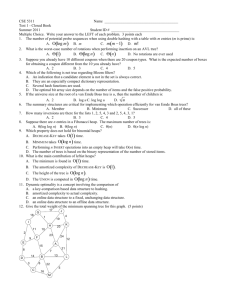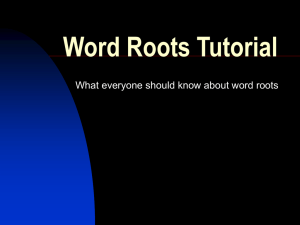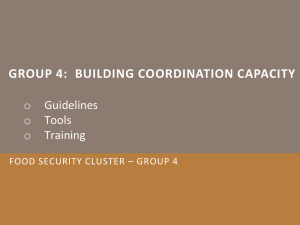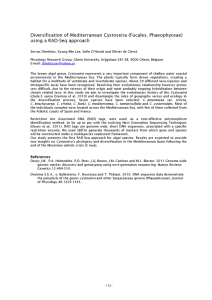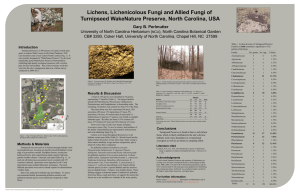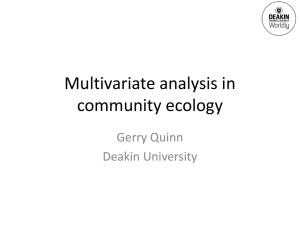Roots
advertisement
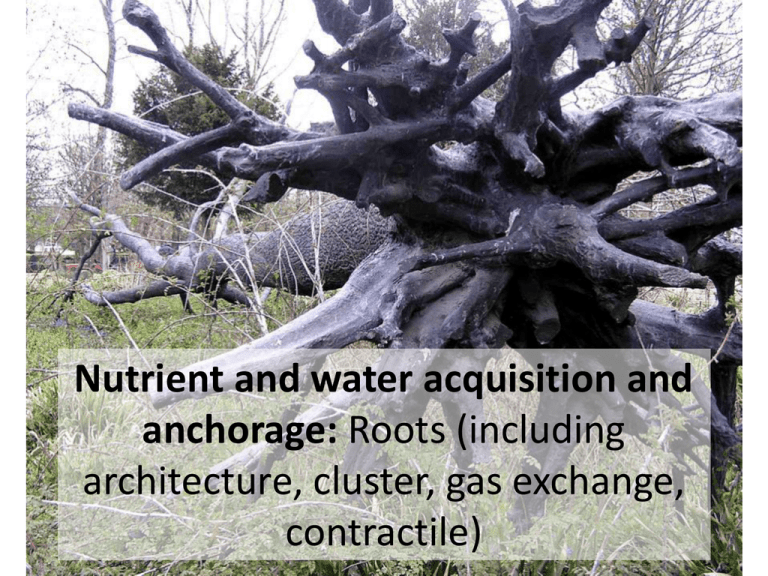
Nutrient and water acquisition and anchorage: Roots (including architecture, cluster, gas exchange, contractile) Questions • Discussions: – Dilys: posting paper and questions for this week – Tatiana: will be picking a paper to post for next week • Paper due in 2 weeks • Any questions? Paper • Short paper: You will also be expected to write a short paper due on 8 March (3-5 pages) on a particular evolutionary innovation in structural design. The topic can, but does not have to be, the same as your discussion paper theme. Your paper should: – Briefly and generally introduce your topic; – Describe where in the phylogeny your innovation occurred; – Describe what the evolutionary innovation in structural design is, comparing this design to closely related taxa who lack these evolutionary shifts; – Explain how the shift in design allowed the taxa to function differently (or perhaps in the same way but via different means); – End with your assessment, explaining in what scenarios taxa having the evolutionary innovation are better off than taxa that lack this innovation (Are taxa with that innovation more competitive in certain settings? Or might it just be a different way to do the same thing?); – You should include at least 8 references. You will need to include both inline citations and a bibliography section formatted for a standard journal in ecology and evolution. I strongly encourage you to add inline references and build your bibliography using a reference manager. Last semester we used Zotero (http://www.zotero.org/) and it worked very well. If anyone wants to schedule time to see how this works, let me know. Roots • Function? Ferns Gymnosperms Angiosperms Rooting architecture • Primary and secondary (lateral) roots • Diffuse root (all fibrous) Root types • Coarse vs fine • Lots of specialized types. Such as? Root distribtuion • Rooting depth: up to ~68 m • But, bulk of roots are in the top soil surface. Why? Pericycle Endodermis Secondary growth Primary vs Secondary Evolution of Cluster (Proteoid) Question • Most Proteaceae (~1600 spp), as well as at least ~ 30 genera within a subclade of the Rosid I, form cluster (Proteoid) roots. • Associated with species growing in nutrient poor soils (especially P, but also Fe, K, and N) • Can their structure and function be pulled together into a cohesive whole? Evolution of Cluster (Proteoid) Ferns Gymnosperms Angiosperms What defines a cluster root • Morphology • Exudation • Metabolism Morphology • Intense growth of determinate branch roots (=rootlets) with associated hairs clustered along root – Simple or compound forms – Cluster root: 1-3 cm long with 10-100 rootlets/mm, Rootlets: 0.5-35 mm, Root hairs: 800/mm2 – Originating from percicycle – Function? Simple Compound Phenology • Production is sensitive to P (and/or Fe, N, K levels) – Rootlets are produced during the rainy seasons (24 months) – Individual root may be active for only 1-3 weeks Exudation • P has poor solubility and is generally fairly inaccessible • Cluster roots have many exudates, including large quantities of carboxylates, such as citrate and malate, released just after rootlets are fully formed at ~ 3-4 days (= exudative burst that lasts ~ 2 days) • Carboxylates bind P or displace it from the soil Metabolism • Citrate/malate are thought to be pulled out of mitochondria away from the respiration pathway – ~20 - 30% of a plants fixed carbon can be exudates Question • Can cluster root structure and function be pulled together into a cohesive whole? – Appears to be linked in morphology, use of exudates, and use of metabolic products – And, … Dauciform roots too



